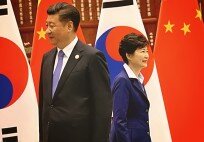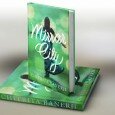By Aurangzaib Khan –
Pashtu film culture, at once, evokes images of loud, vulgar portrayals and wild film buffs. A tantalizing look at the on-screen effrontery
On an overcast Saturday when film billboards brandishing guns and gore look strangely subdued in the face of a gathering storm, the air in Arshad Cinema in the heart of Peshawar city is electrified with anticipation. A crowd of Pashtu film buffs shift impatiently in the shadows of the hall waiting for the afternoon bill to begin. Out in the compound, a flood of fans claw at the gates to get in. One would be forgiven to think all the thrill is about a latest show come to town. One would be wrong.
The fans are here to catch a glimpse of a screen idol, visiting the cinema on the premiere of his film. All eyes look up at the cinema quarters in anticipation of Shahid Khan, the Pashtu film heartthrob, making an appearance. There are no red carpets, no blinding flash guns. Or celebrities dressed up to the nines, stepping out of limousines. Just fans all over the place. A star-struck Karimullah who comes from Ummar Payyan in the city’s suburbs gushes about the star whose film will be released shortly:
“He is the action hero with a lot of dabab (presence).” While the real Shahid Khan remains elusive to the discomfort of sweating fans, his reel persona looks down from garish billboards above. Tahir, a driver with one leg resting on a rickshaw wheel, cap askew, grimy vest peeping out of an open collar, spits on the ground and declares: “He is not much impressive in person but looks great on screen.” Outside, in murky interiors of Qaawa Khanas peppered all over the street, eyes look up from dingy table-tops at TV screens flickering with the violence of Pashtu film action scenes. Restaurants without TVs reverberate to loud Pashtu film dialogue albums played on stereos dressed in gaudy brocades. This place is a truck-driver’s heaven: His film, his music, his tikka, tea and hash – a lot of this last. The cinemas here and elsewhere in the city mostly show Pashtu films. The huge number of cine-goers who frequent this place will have you believe Pashtu cinema is alive and kicking even when Lollywood is sinking fast. Has sunk already. The impression is not entirely misplaced when you consider the number of Pashtu films produced and released when new Urdu and Punjabi films have long become a rarity.
Like Lahore’s character coloured by the film industry it has, Pashtu cinema has spawned a sub-culture in Peshawar city as colourful as it is sleazy. It is trash art elevated to popular entertainment in which many a man in the street find his reflection. Across the road from Novelty Cinema that’s playing the latest Pashtu flick Sta Da Yari Na May Tuba (I’m better off without your love) are music and photo shops that feed off the movie-buffs mania for all things filmi. Among the several photo shops on this “Pashtu Film Piccadily Street” with four big cinema houses is Niaz Studio. The walls of the photo studio are a crazy collage of film snaps in hundreds. While many of the faces in pictures you’ll recognize from films, others are unfamiliar. “My clientele is from Tirah (in Khyber Agency), Mardan, Nowshera and Charsadda who want to be placed in filmi picture and posters”, explains Irfan, the proprietor. “We take their pictures complete with guns and bullet-straps and super-impose them on an action scene. The demand for such pictures far exceeds that of passport photos”. The lure of lucre from a genre boasting “full house” credentials in cinemas across Khyber Pakhtunkhwa — and cities like Karachi,
Quetta and elsewhere where Pashtuns abound — has driven stars and directors associated with Urdu and Punjabi cinema to abandon the sinking ship for one that is buoyant. Among credits now gracing Pashtu film posters are Muammar Rana, Sangeeta and others who formerly lived off other Lollywood genres. “The industry is now being fed by the Pashtu films”, says the veteran film star Asif Khan, a perennial favourite with Pashtu film lovers. “There are five to six Pashtu films under production at any given time keeping the industry activity alive and people employed. In Karachi with its huge Pashtun population where only two cinema halls used to play Pashtu films, the number has gone up to 13, making it the No. 2 business spot for the Pashtu film industry. Earlier there used to be only two distributors for Pashtu films, now there are 8 to 10. ”
The industry A league’s scramble for big money in Pashtu cinema may have been prompted by declining fortunes but Lollywood has always been drawn to the genre for commercial reasons. In fact, it is the industry old guard at Lahore and Karachi who in collaboration with Pashtun producers made Pashtu cinema possible. The first Pashtu film, Laila Majnoon, only partially shot in pre-partition Bollywood at a time when the sun was setting on the British Raj, did not see the light of day. Nor did Pashtu cinema take roots for a long time since. It was much later when Bollywood was banned from Pakistani cinemas in the wake of 1965 war and Lollywood became a staple for cineastes that producers looked Northwest for potential business. Classics like Dara e Khyber, Firangi, Yousaf Khan Sherbano and Urbal were made in Eastern Studio Karachi and Lahore with expertise of industry professionals not Pashtuns.
The early films and songs borrowed heavily from Pashtu folklore and folk verse. “In the beginning we were afraid we would risk Pashtun ire even when the early films were true to form, complete with emphasis on purdah and Pushtunwali (the way of the Pashtuns)”, says Asif Khan. “Films like Dara-e-Khyber were about Pashtun rebellion against the British rulers — a history Pashtuns are proud of. That kept everyone happy, much to our relief.” At the time when there were no established Pashtun actors to feed a fledgling genre, those working behind the screen — even on screen — in Urdu and Punjabi film industry moved in to fill the vacuum. The late Badr Munir — dubbed the Dilip Kumar of Pashtu films — was once an ordinary lights man for Urdu films. For female characters that couldn’t find Pashtun actors due to cultural constraints, women of Punjabi and Urdu origins starred in the roles. The scenes done in Urdu and Punjabi were then dubbed in Pashtu. In the past, non-Pakhtun women stars like Suriya Khan, Musarrat Shaheen, Shahnaz and a host of other Punjabi actors got top billing as Pashtu cinema’s leading ladies. Even Urdu singers like Mala and Runa Laila sang Pashtu numbers.
The tradition continues with female actors like Sidra Noor, Nazoo, Nighat Chowdry and others cast in lead roles today. This partnership that involved Punjabi professionals working with Pashtun producers garnered great films, stars and songs that linger on in the memory of purists now disillusioned with what they dub “rank commercialism” peddled in the name of Pashtu cinema. Association with Lollywood may have made Pashtu cinema but it has also been its undoing, they argue. Pashtun intellectuals and nationalists point to the “conspiracy” to malign their image through films that have precious little to do with their culture and identity.
“The problem with Pashtu films is that the industry is based in Lahore”, says Prof. Raj Wali Khattak, former director of the Pashtu Academy at the University of Peshawar. “Since no Pashtun woman can imagine being cast in film roles and do unimaginable things directors expect them to, the industry people have brought in ‘professionals’ like Musarrat Shaheen and others who are not Pashtun. Individuals like KB Afridi and Sanobar Khan who patronised the Pashtu cinema in its heyday were the conscience of Pashtu culture. Now, the industry is run by people who exploit the medium to make a quick buck. They invest in commercial ventures not culture.” He continues: “Films now serve no positive purpose but appeal to basic instincts. They are for the labour class, the drivers and the shoe polishers in the city streets. No-one else in the right mind can watch them, certainly not with family. ”
The popular reaction among Pashtun intelligentsia about Pashtu cinema is one of disgust and alarm. It is widely perceived as a distortion of a culture that the Pashtuns so jealously guard. From the original themes based on folklore and folk music close to the Pashtun heart, films have increasingly drifted towards ‘commercial themes’ and in time became “synonymous with porn”. From something that the Pashtun initially took pride in, Pashtu cinema has now become a thinking man’s shame. “Pashtu cinema touched its nadir during the Afghan jihad years”, says Prof Raj Wali Shah, an opinion that many share. “While there was a focus on rigid Islamisation in other fields, premises based on violence and vulgarity became popular in Pashtu cinema. Films glorifying drugs, smuggling and Kalashnikov culture became de rigueur.” “Pashtu films were taken to Punjab, Sindh and Balochistan and played for the depraved. They became our recognition.
They attracted non-Pashtuns in droves that invested in them because they were cheap and made huge profits. For more than a decade, vulgar films were made mostly by Punjabi co-producers and directors depicting extras like Ishrat Chowdary and Mina Chowdry in pelvic-thrusting extreme close-ups. I wonder how the censor board ever passed such abomination,” he says. According to Asif Khan, it was a time when a “mafia group” took over the cinemas when many of them were leased out by owners. This group with a strong political backing went overboard in its effort to tarnish the Pashtuns. “The group sponsored vulgar kitsch and would insert skin flicks in Pashtu films while playing them in the cinemas it owned”, says Asif Khan without naming any names. “Even when the censor board removed objectionable scenes, the directors would put equally steamy songs to fill in the gaps. Consequently, a film would have 18 to 20 songs and no logical plot.”
All the noise from intelligentsia has brought about little change in Pashtun cinema because at the end of the day, it is all scattered voices. Despite the concern, there is little concerted effort made to stop the rot at the heart of Pashtu cinema, say culture buffs in Khyber-Pakhtunkhwa. Considering the fact that such ventures are produced and directed by Pashtuns, doesn’t this criticism of “outsiders” for distorting Pashtun culture sound a bit selfrighteous? Sher Alam Shinwari, who writes extensively about Pashtu culture and literary scene, thinks not. “Several veteran actors protested against this state of affairs and some even boycotted the films”, he says, a fact that actor Asif Khan confirms. But the film producers at the time brought in new, unknown faces ready to do their bidding. Or they would shoot a film and then, unknown to actors, insert sultry scenes and songs. Pashtun actors, directors and producers who wanted to do nothing with bad cinema even formed a Pashtu Islahi Jirga in the industry to campaign for reforms in Pashtu cinema.
According to poet Abaseen Yousafzai, among the top three resolutions in an International Pashtu Language Conference held in Peshawar was one to wage a campaign to make Pashtu cinema culturally sensitive and representative. Producers and directors now associated with Pashtu cinema insist that all that has changed for the better. The figures now dancing on the screen of Arshad Cinema are properly dressed even when the gaudy western dresses, story and the songs look perfectly incongruous to a Pashtun setting. The cinema belongs to a famous producer Sardar Khan who made the classic Urbal that played for a record five years in a local cinema. His son, Arshad Khan, is a famous director.
His other son, Shahid, is even more famous for being among the new crop of leading actors who have replaced the ageing veterans. The young guns of Pashtu cinema will have you believe they are doing their best to make films family-friendly again. Whether this change is due to a change of heart or fear of the hardliners — such as the Muttahida Majlis Amal government in then- Frontier province during the Musharraf regime that had clamped down hard on obscenity — it is hard to tell.
Even when the female faces on the billboards outside cinema halls were defaced by party vigilantes, producers and directors scoff at the suggestion that MMA had anything to do with the tamer version of Pashtu cinema. On a Sunday afternoon, the northern hill resort of Abbotabad is swamped by weekend tourists seeking refuge from the oppressive heat in the plains. The sun and the clouds play hide and seek and a gentle breeze ruffles the heads of lofty pines. Unknown to the noisy city below, the tranquil idyll of Shimla Hotel high up on the valley’s rim is shattered by a scene of gratuitous violence. Much gun totting and unrestrained snarls mark the on-location shoot of Yari Manam, Badmashi Na Manam (love’s acceptable, not hooliganism), Arshad Khan’s latest opus. The fight between two Pashtun tribes is over a rebellious girl who dares spurn tradition and seeks end to a blood feud. The role of rebellious lady doctor is played by Sidra Khan, an actor of Punjabi origin who dialogues in Punjabi. She laughs a confused laugh when the writer insists she act like she said it in Pashtu.
It is an unlikely Pashtun setting where the film crew and cast speak Punjabi, an androgynous dance director wears layers of make-up, silver rings, bracelets and a peroxide curls, and extras have names like Rambo and Reema. For much of the shoot, director Arshad Khan is away, talking into his mobile phone pique.pk 85 on the side, while the writer and the stars go about directing and congratulating themselves on a shot well done. Although he humbly acknowledges that he has learnt whatever he knows about film making from old classics of Pashtu cinema, the 29-year-old director minces no words about breaking up with the past.
“Times have changed”, says a relaxed Arshad Khan who in his glitzy western street wear is a man in tune with his times. “There is cable in every house with Bollywood and Hollywood channels on it. People are ready for bold new ideas. I cannot focus on Pashtun culture alone in my films because that will narrow my audience and my potential. All my films will be the same if I cling on to cultural themes. There will be no song and dance with the heroine because going by the tradition, the hero would rather kill her than cavort with her in the fields.” He adds, “I offer entertainment and my films are watched by Punjabis, Sindhis and Balochis. I have to give them women in pants because that’s what they want. Still we incorporate strong messages like this film which depicts blood feuds as senseless and undesirable.
I can’t make swara a theme of all my films. Then again, is it a good cultural theme to depict and explore?” As the market forces of demand and supply clearly push ethnic pride into a corner, the controversy over Pashtu films making a mockery of Pashtun culture rage on without any solution in sight. The intelligentsia and the industry professionals may be involved in this culture vs commercialism tug-of-war over Pashtu cinema but the deciding factor in this contest is the viewer from a village without cable and TV who pays a hefty Rs200 for every film he watches. And he watches a lot, for that is the only entertainment he gets. “There was a time when the films were ghair (external) to our culture”, says Raees Khan of Bakshoo Pul in Peshawar suburbs.
“Not anymore. You can now watch them with family”, he adds, even when the viewers are all male and cinema halls reek of hash smoke, hurting one’s eyes and making breathing difficult. When the Muttahida Majlis Amal (MMA) provincial government closed the doors of Peshawar’s only theatre during its five-year stint under General Musharraf’s rule, it opened new avenues for artistic expression. Instead of staging comedy plays complete with song and dance for hordes of suburban audience at Nishtar Hall, the artists and producers took their act to viewers’ hujra’s and living rooms. Since then, performing arts in Peshawar and Khyber-Pakhtunkhwa have taken a life of its own, with prolific private productions stepping in to fill the gap, producing more films, plays and stage shows then rabbits produce babies.
The music stores on Peshawar city’s Cinema Road boast a dizzying array of Pashtu plays and tele-films exclusively made for CDs. For a price much less than a film ticket, not to mention the agonizing push and shove in the queue, one can now bring home some fun. And treat family and friends to it as well. “Everyone in the village likes these films”, says Hidayatullah from Bajaur Agency who is sampling tele-films at an overhead DVD player at Rahat Video, a music and film shop. “I play films at my hujra for friends and guests.” So do mighty Maliks and ordinary mortals all over tribal areas, if he is to be believed.
“Tele-films and plays are much in demand because they are convenient, fun and culturally appropriate”, says Sher Ali, a counterclerk at Rahat Video. A crowd of customers here testifies to the popularity of a genre that has left many equally excited and dismayed. For comedians like Ismail Shahid and Alamzaib Mujahid, it has meant an end to dependence on the cash-strapped PTV and stage plays at Nishtar Hall. They can earn more and are free to explore different genres. What’s more, their status has been suddenly elevated from TV and stage artists to movie stars as they provide comic relief in tele-films. Cinema owners and managers, however, see it as a threat to a moribund business already dented by a proliferation of cable and VCD/DVD culture. “There are very few people coming to cinemas now”, says a cinema manager who wishes not to be named.“You can buy a CD for Rs 30 when you pay Rs 200 for a cinema ticket.” And that may well be the reason why film producers are getting involved in the production of tele-films. In fact, the trend of CD plays that took the market by storm some years ago has gradually morphed into a craze for tele-films.
From Nishtar Hall to Nishtar Abad where the distributors and producers of tele-films and CD plays are based, the relation between Pashtu plays and tele-films has become increasingly incestuous. With more and more producers now submitting to the market demand for sleaze, violence and song and dance as popular themes of entertainment and making plays that look more like films, the boundaries between the two genres have become blurred. “In the beginning, the producers tried making family plays”, says Zia Jan, proprietor at the Sarhad Cassette house. “Now, they are trying to keep with the competition by adding vulgar dances and violence to the brew.”
‘IDENTITY’ CARD
Billal Ahmad, a banker, recalls his experience of watching one such a film in the late Eighties: “My friend and I went to see a Pashtu film in the Shama cinema, owned by a political family. We quarreled with a guard at the cinema gate who wouldn’t let me park my car in the cinema compound. “In the end, he let me go but kept my identity card. I asked his name and remembered his face because he had my card and distinct green eyes. Before the film started, they showed several steamy Pashtu numbers featuring Musarrat Shaheen and other half clad women dancing in the rain. “There were even more explicit songs shot completely indoors with unknown faces. One such song started with a half-naked woman in a bedroom cavorting to a Pashtu number on a table top.
While she made provocative moves and mouthed the song, the bathroom door opened and in came a semi-clad youth. “My friend, who has a greater presence of mind than I, exclaimed: Isn’t that the dude who kept your card?! And he was right. For the rest of the song, the gate-keeper did unmentionable things to the girl. “Clearly, the song was not from a film but shot by the cinema people to give audience something extra on the side. The film even had a long porn clip inserted in it. Later when we asked the youth about his exploits on the screen, he winked and laughed.”
The writer is a journalist based in Peshawar































































































